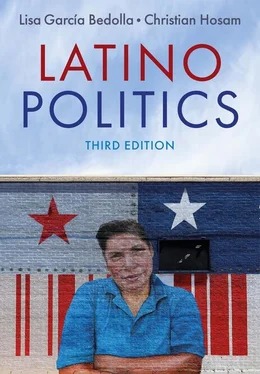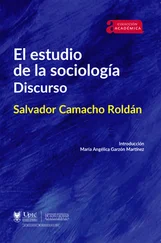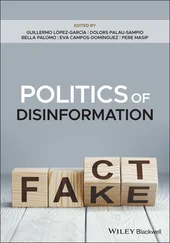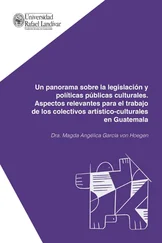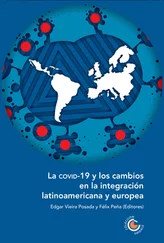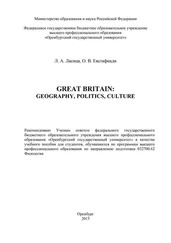Thus, there are many terms which are used to describe individuals of Latin American origin living in the United States; some of them are national-origin-specific, others spring directly from the political mobilization of the community or from the desire of group members to come up with new terms to describe themselves. For the sake of simplicity, this text uses the term “Latino” to refer to groups of Latin American origin generally, and national-origin-specific terms to describe the experiences of individuals from particular countries. By doing so, we do not mean to imply that latinidad is gendered in a binary way. We are simply adopting one of the most commonly used terms. Its use should not be interpreted as excluding or minimizing the importance of non-female or male-identified Latinos. This discussion should make clear that these labels come into and out of style and can be politically or personally important. Many Latinos choose to use different words to describe their identities – terms that are grounded in their particular historical, personal, and political experiences.
Latinos’ “Ethnicity” and “Race”
The fact that this book focuses on the experiences of Latinos in the United States implies that Latinos constitute a social group, one that should be the focus of the present study. But what does it mean for a group of people to be a social group? Political theorist Iris Young described a social group as “a collective of persons differentiated from others by cultural forms, practices, special needs or capacities, structure of power, or privilege.” 12According to Young, what makes a collection of people into a group is “less some set of attributes its members share than the relation in which they stand to others.” In other words, defining Latinos as a social group does not mean that we need to assume that all Latinos are the same, share the same experiences, identify in the same ways, or have the same goals or aspirations. We will see in the next chapters that this is not the case. Latino national-origin groups have had very different experiences in the United States. They arrived at different points in American history, migrated for very different reasons, settled in different geographic settings, and have been treated in disparate ways by the US government. There are important experiential and demographic differences within Latino national-origin groups as well; these are due to geographic location, class status, nativity, generation, gender identity, sexual orientation, and other factors. Despite this heterogeneity, what is similar about the experiences of all US Latinos is where they were placed in the US racial hierarchy and how that placement has affected their social, political, and economic opportunities.
Given their differences of experience and background, if Latinos are a social group, are they a racial group or an ethnic one? The distinction between these two characterizations has been the source of ongoing debates among scholars – debates which will not be resolved here. The term “race” presupposes a common biological or genealogical ancestry among people. “Ethnicity” places more of an emphasis on culture than on common genetic traits. In an attempt to bring together both concepts, Michael Omi and Howard Winant define race as “a concept which signifies and symbolizes social conflicts and interests by referring to different types of human bodies.” 13They emphasize social conflicts in order to get us away from biological understandings of what race is. There is no biological foundation for separate “races” of humans. As recent DNA tests have proven, many individuals whom we see as “Black” are in fact more European than African in terms of their DNA. For example, Henry Louis Gates, a prominent African American intellectual, found he has as much European DNA as West African DNA (most African Americans are about 20 percent European). This kind of testing forces us to reconsider what “race” means and to see how these categorizations have more to do with society than with biology.
Feminist philosopher Linda Alcoff suggests using the term “ethnorace” to describe the Latino experience in the United States. For her, “ethnorace” is a concept which combines the experiences of both ethnicity and race. She argues that “using only ethnicity belies the reality of most Latinos’ everyday experiences, as well as obscures our own awareness about how ethnic identifications often do the work of race while seeming to be theoretically correct and politically advanced. Race dogs our steps; let us not run from it else we cause it to increase its determination.” 14The term “ethnorace” is meant to describe the ways in which factors often attributed to culture, such as language, can be racialized. In other words, ascriptive attributions can be based on linguistic or cultural practices that are not “racial” (or biological), but still can have racialized consequences. Because we believe the lived experiences of Latinos in the United States include both racialized and ethnic/cultural traits, we describe them as an ethnoracial group. Scholars like Omi, Winant, and Alcoff are attempting to find ways to define a social phenomenon which has historical roots and important material consequences, but which is nevertheless artificial in that its underlying reality is fluid and changes over time.
In order to describe race in a way that recognizes this fluidity, scholars explain ethnoracial processes as social constructions. Social construction means that the values attached to particular external attributes, such as skin color, are defined, or constructed, by society. Put another way, the problem is not that of the recognition of ethnoracial differences among people, but rather that of the values, or hierarchies, attached to those differences. For the bulk of United States history, being defined as “white” gave members of that group access to social, legal, economic, and political privileges which were closed to those not defined as “white.” For example, one of the first laws passed by the United States Congress in 1790 was a citizenship law which stipulated that no non-white person could become a naturalized citizen of the United States. This restriction remained in force until 1943, when individuals of Chinese origin were allowed to be naturalized for the very first time. This racial restriction on naturalization was finally removed completely for all groups in 1952, with the McCarran Walter Act. In addition, many states made it illegal for a non-white to testify in court against a white, to serve on juries, to live where they wanted to live, or to work in the most skilled jobs. These restrictions limited non-whites’ access to the protection of the legal system and their possibilities for social, political, and economic mobility. Thus, racial constructs have been directly related to access to fundamental items such as resources, citizenship rights, and the protection of the state (that is, to having a criminal justice system that actually defends your person and/or your property). Therefore, race may be constructed, but which category an individual belongs to has had, and continues to have, significant material and political implications for their life chances.
Because racial categorizations determined access to resources, US federal and state governments had to come up with schemes in order to determine the “race” to which individuals belonged. Often referred to as the “one-drop rule,” these schemes attempted to define who was white and who was not. The “one drop” refers to the fact that, in much of the country and particularly in the south, having as little as one drop of non-white blood made it impossible by law to claim “whiteness.” For example, in California, in 1849, having half or more of “Indian” blood would lead to one’s being considered not “white,” and half or more of Black blood made a person mulatto. In 1851, the law was changed so that only one quarter of Indian blood would make a person not “white.” Yet many of these laws were challenged, leading the courts to have to determine what constituted being “white.” An especially good example of this is that of the prerequisite cases. These were cases brought by individuals who wanted to contest the 1790 law barring non-whites from being naturalized in the United States. 15Looking at petitions by Asian Indians from 1909 to 1923, we see that in 1909 the court in Balsara ruled that Asian Indians were probably not white, because the people on the jury thought it unlikely that Congress intended for Asian Indians to be considered white under the 1790 law. Yet, in 1910, the court ruled in two cases that Asian Indians were white, on the basis of the petitioner’s skin color and of scientific evidence regarding the origins of the Caucasian race. This ruling was reaffirmed in 1913, with appeal to legal precedent. Yet, in 1917, the court ruled that Asian Indians were not white, on the basis of common knowledge and congressional intent. The same court reversed this position in 1919 and 1920, deciding again that the Asian Indians involved in those cases were white. Then, in 1923, the Supreme Court ruled again, on the basis of common knowledge, that Asian Indians were not white. From that point on, on the basis of the 1923 legal precedent, the court ruled that Asian Indians were not white and therefore ineligible for naturalization. The Asian Indian case shows how difficult it was for the courts to maintain these kinds of ethnoracial categorizations in the face of any sort of systematic scrutiny. Yet that is exactly what the US government did; and its actions had important consequences for those US groups which were considered non-white. Latinos were one of those groups.
Читать дальше
